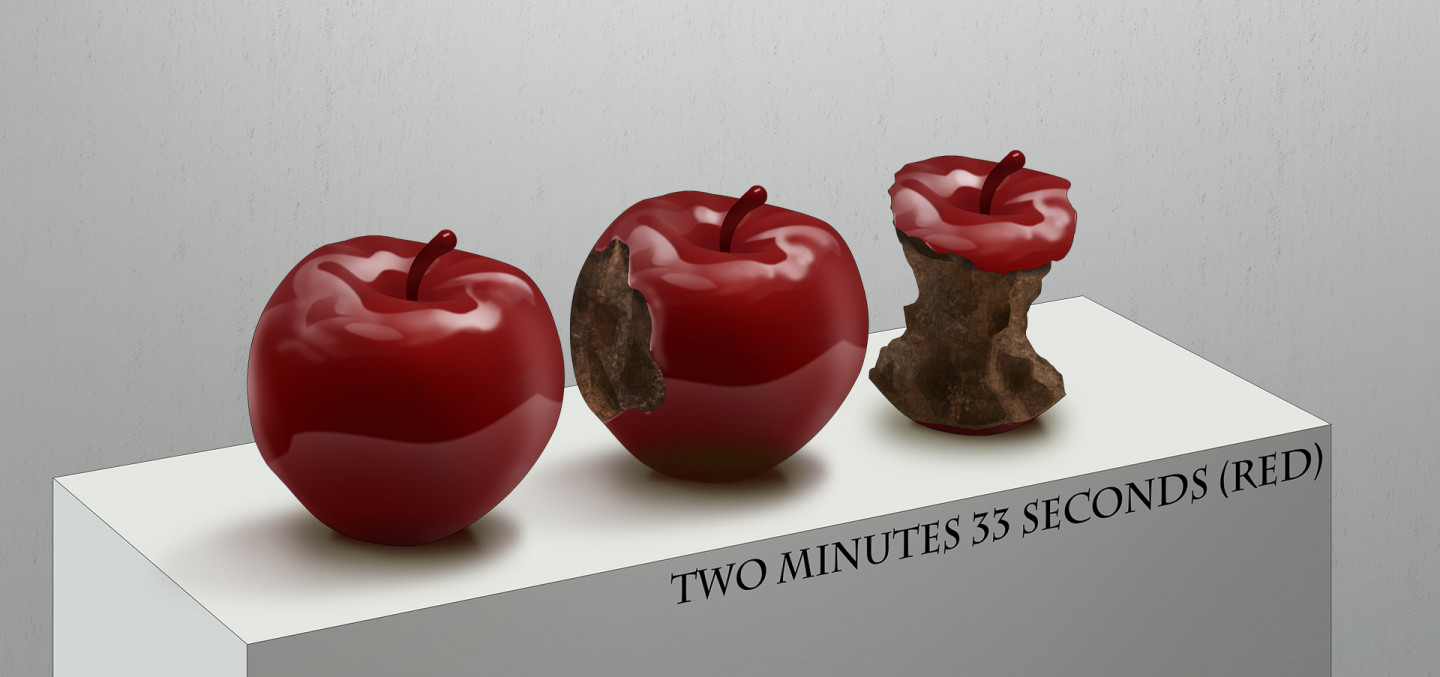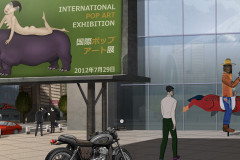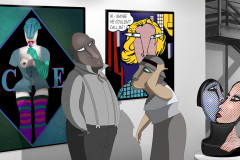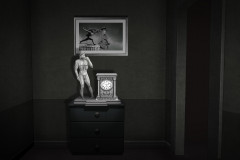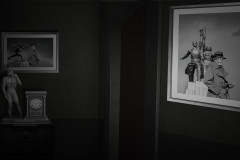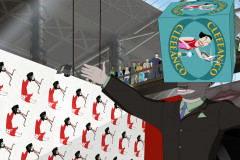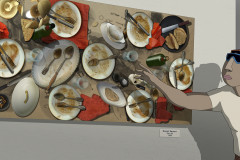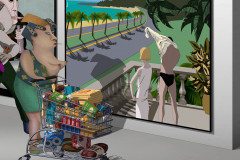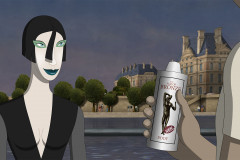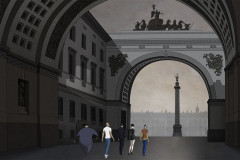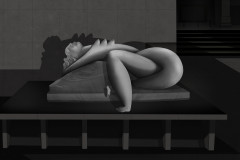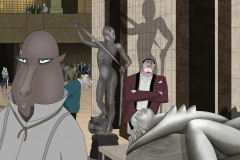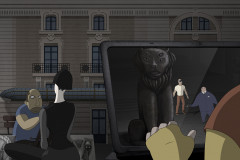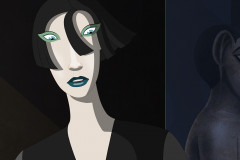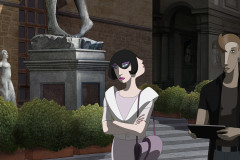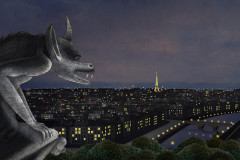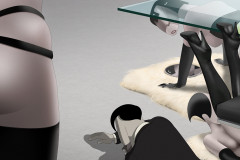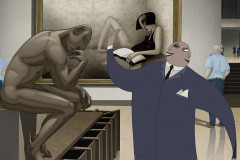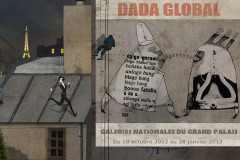Billy Apple (1935-): 2 perc 33 másodperc, 1962 (bronz, zománcfesték). A Barrie Bates néven Új-Zélandon született, az 1960-70-es években New Yorkban élő pop-art művész szinte kereskedelmi márkaként fogalmazta újra magát 1962-ben, amikor is „alma” lett a neve és műveinek szinte kizárólagos tárgya, mellesleg pedig a Big Apple-nek ( = Nagy Alma) becézett New Yorkba költözött. A Ruben Brandtban a tokiói kiállításon láthatjuk 3 almából álló alkotását, amelynek egyik darabját Bye Bye Joe vágja hozzá menekülés közben az őt üldözőkhöz. Vigyázat, bronzból van!
Billy Apple három New York-i zöldségest is végiglátogatott, míg egy indiai árusnál megtalálta a tökéletes „modellt”, azaz azt az almát, amelyet aztán pontosan 2 perc 33 másodperc alatt fogyasztott el. De nem ám akárhol, hanem egy híres New York-i bronzöntő műhelyben, ahol a még ép almáról is öntvényt készítettek, majd a dolgozók nagy derültségére pár harapás után újra és újra megismételték a műveletet. (A stopperrel mért evésidőbe az öntvénykészítés természetesen nem tartozott bele). Az így elkészült, három fázist rögzítő darabokat aztán egy autófényezővel festtette zöldre, pirosra, illetve aranyra. „Miből áll akkor a művész munkája?”- kérdezhetnénk. Az almaevésből? Inkább az ötletből, amelyet kitalált és következetesen végigvitt – ezzel a konceptuális művészethez legalább annyira közel került, mint a pop-arthoz, amely a hétköznapi dolgok és a magas művészet határainak elmosására törekedett. Billy Apple művében és a címadásban van valami filozofikus is: a sokszor oly szubjektívnek tűnő idő múlását rögzíti, teszi láthatóvá és kézzel foghatóvá. Miközben jót mosolygunk a meglepő gesztuson: az amúgy ösztönös mozdulattal kukába dobott almacsutka piedesztálra emelésén.
Billy Apple (1935–): 2 Minutes 33 Seconds, 1962 (bronze, enamel paint). Born in New Zealand as Barrie Bates, the pop artist rebranded himself almost as a commercial product in 1962, adopting the name “Apple” and making the fruit nearly the exclusive subject of his work—coincidentally around the same time he moved to New York, also known as the “Big Apple.” In Ruben Brandt, Collector, his piece composed of three apples appears at the Tokyo exhibition, with one of the apples hurled by Bye Bye Joe at his pursuers during an escape. Caution: it’s made of bronze!
Billy Apple visited three greengrocers in New York before finding the perfect “model” at an Indian vendor—the apple he would eat in exactly 2 minutes and 33 seconds. But not just anywhere: he did so in a renowned New York bronze foundry, where they first cast a mold of the untouched apple. Then, to the amusement of the workers, he repeated the process again and again after each bite. (The stopwatch-measured eating time, of course, didn’t include the casting process.) The resulting three-stage sculptures were then spray-painted—green, red, and gold—by an auto-body painter. So what exactly is the artist’s job here? Eating the apple? More accurately, it lies in the concept—an idea fully developed and consistently executed. With this, Apple’s work approaches conceptual art just as much as pop art, which sought to blur the boundaries between everyday life and high art. There’s also a philosophical note in both the work and its title: time—often so subjective—becomes something recorded, visible, and tangible. And all this while we smile at the surprising gesture: elevating the humble apple core, normally tossed without thought, onto a pedestal.






